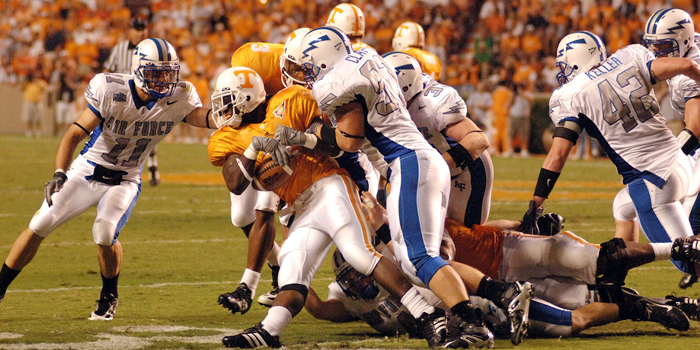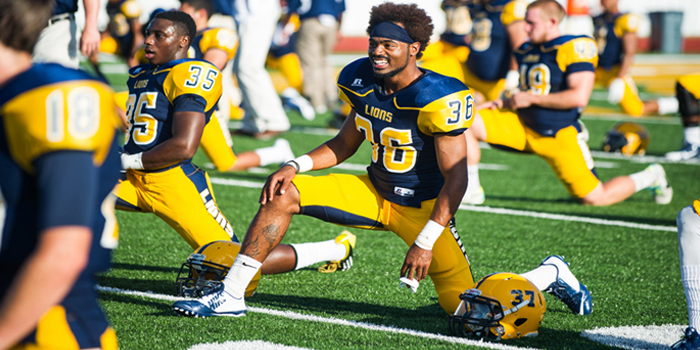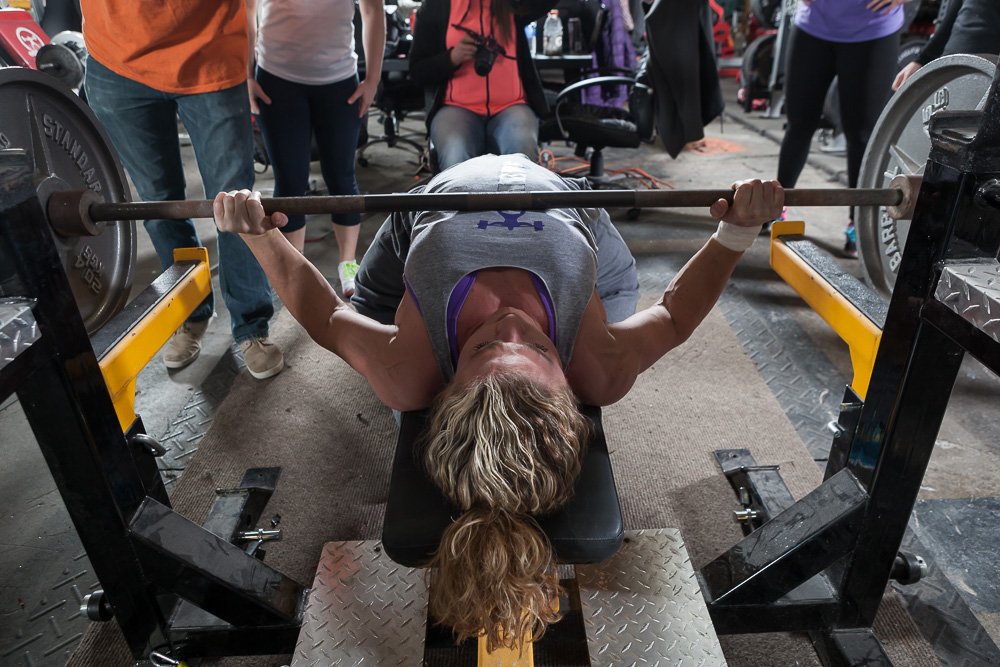
The development of the stretch reflex (also known as stretch-shortening cycle in strength training, and M1 in neuromuscular development) is a well-known component for increasing athleticism. Training the stretch reflex is commonly used for increasing strength and overall development of power. Less commonly known, the stretch reflex plays a very important role in the development of flexibility, or rather, inhibition of. Also, the stretch reflex, in terms of neuromuscular development, enhances injury prevention. In this article, I will further discuss each of these things.
Though we know the benefits of training the stretch reflex, do we know how and why? The reasons for which we’ll need to look physiologically at the make up of muscle. There are two important mechanoreceptors in the stretch reflex: the muscle spindle fibers and the golgi tendon organ (to be discussed further).
First, let's discuss flexibility, since the ability to have a full range of motion is critical during all types of training.
Former elitefts Director of Education and current team member Mark Watts has written in great length about how full range of motion is beneficial and even critical when performing the back squat:
WHY EVERY ATHLETE SHOULD SQUAT PARALLEL (OR BELOW)
POSTERIOR CHAIN DEVELOPMENT
- The glutes and hamstrings are not fully engaged until the athlete attains a parallel position.
- The glutes play a significant role in hip extension during running and jumping.
- Not squatting parallel can place overemphasis on the quads and de-emphasize the role of the hamstrings.INJURY PREVENTION
- Squatting parallel develops the stabilizing muscles of the knee more efficiently
- Squatting parallel enhances strength at a greater range of motion
- Squatting parallel helps minimize the gap between quad to hamstring strength ratioLEAN BODY MASS GAIN
- Squatting to parallel means a greater range of motion, thus increasing the:
–Motor units and muscles fibers being recruited
–Time under tension, which increases total work done within the same rep
–Joint Angle, which enhances the stretch reflex and connective tissue strengthFLEXIBILITY
- Squatting to parallel can increase the athlete’s functional flexibility
- Squatting to parallel helps the athletes become more “comfortable” and confident when bending his/her knees in sport
- Squatting to parallel addresses some problems of “playing low” and enables the athlete to change direction more efficientlySAFETY
- Squatting with a limited range of motion will increase the weight lifted by the athlete.
–This in turn, will greatly increase the axial load on the spine
–This will also place much more stress on the knee due to the limited degree of flexion
Proper flexibility will improve overall range of motion. Flexibility can also work out muscle and joint contractures; for example (obviously) abnormally short muscles. Not only are short muscles not ideal, but they also cause abnormal articulations of bones that can lead to numerous postural problems. Increasing flexibility will allow for more proper movement patterns and prevent non-optimum movement patterns from occurring. The stretch reflex plays an important safety role when it comes to flexibility or any type of stretching of a muscle.
A key component to increasing flexibility is mitigation of the stretch reflex of a muscle. In a basic definition, the stretch reflex is an automatic contracting response to a muscle being elongated. It is a neuromuscular response to tension produced in the muscle. The muscle will respond with an immediate contraction to reorient itself to the new position, protect itself, and maintain posture. This, in turn, prevents optimizing elongation of the muscle; the stretch reflex automatically hinders flexibility exercises.
There are numerous flexibility exercises and techniques:
- Dynamic Stretching: a controlled stretch that is performed by moving through a challenging but comfortable range of motion repeatedly; there is more coordination involved than when compared to static stretching. Dynamic stretching is primarily used to warm up athletes before sports events due to the benefits of the functional movement.
- Static Stretching: a challenging stretch that is held for a period of time; safe and effective way to improve ones flexibility.
- Neuromuscular Inhibition (NMI)/Proprioceptive Neuromuscular Facilitation (PNF): Hold-relax; contract-relax; hold-agonist contraction; agonist contraction.
- Myofascial Tissue Stretching: manual tissue stretching through pressure via fingers, elbows, or tools; foam rolling.
- Stretching Tight Neural Tissue: can be accomplished through PNF stretching and other techniques provided by both a physical therapist or yourself manually.
Probably the most common stretching technique is static stretching. This technique can be affective in mitigating the stretch reflex if held for a long enough period of time.
Immediately upon a muscle being stretched both mechanoreceptors (muscle spindle fibers and golgi tendon organ) send sensory impulses to the spinal cord. Initial impulses from the muscle spindles inform the central nervous system that the muscle is being elongated. The spinal cord responds by sending impulses to contract that muscle (stretch reflex) and in turn, resisting the stretch. The golgi tendon organs also send sensory impulses to the spinal cord upon maintained tension of the muscle. If the stretch is intentional (flexibility exercises) it should be held for more than fifteen seconds; this is about how long it takes for the golgi tendon organs to override the muscle spindles. After the fifteen second mark the golgi tendon organs’ impulses cause a reflex relaxation of the muscle being stretched (the antagonist muscle). This is a protective mechanism that allows the muscle to stretch through relaxation without damaging the muscle fibers.
RELATED: The Importance of the Eccentric
If flexibility is your goal, then along with mitigating the stretch reflex, you also want to decrease the viscosity in a muscle. Viscosity is the resistance of fluid within and surrounding the muscle. High viscosity happens to a muscle when the fluid is not distributed equally. Cross-bridges of muscle fibers can bind together to inhibit proper distribution of fluids surrounding the muscle. One great way to decrease the viscosity of a muscle is to increase the internal body temperature; this can be done by a dynamic warm-up or by using passive heating modalities (i.e. ultra sound), though it is much more effective and recommended to decrease the viscosity of a muscle through a proper dynamic warm-up. I won't go further into muscle viscosity because the topic of this article is the stretch reflex, but it is important to note the correlation to flexibility inhibition.
Another goal that athletes will achieve through increased flexibility is an increased total work output. Work is equaled to force multiplied by distance. You can first increase the distance a muscle travels through a contraction by increasing the range of motion via flexibility exercises. Force will naturally be increased during strength training.
Along the lines of flexibility, injury prevention is also an integral part of the stretch reflex. The time it takes for a muscle to respond to a sudden elongation (stretch reflex) is imperative to injury prevention. The stretch reflex is referred to as M1 during the application of neuromuscular response in injury prevention. The responsibility of M1 is to prevent injury. To do this, the reaction has to happen extremely fast. It takes about 30 to 40 milliseconds for M1 to respond to the sudden elongation of a muscle.
An example of an M1 exercise is any type of rhythmic stabilization exercise. Rhythmic stabilization exercises are comparable to proprioceptive exercises in the fact that a very light force is used to disrupt the current state of stability in a muscle. A classic neuromuscular control exercise is rhythmic stabilization of the shoulder. This exercise is performed by having the athlete hold their arm out straight in front of them (or the side, or virtually any angle). The athlete then tries to remain completely stable and keep from moving at all while a training partner taps their arm rapidly and from random directions in an attempt to disrupt their current state of stability ever so slightly. The goal of these exercises is to decrease the time it takes for M1 to respond. The quicker the response of M1, the quicker you will revert back into your original position of stability, consequently developing a more stable joint. Training the M1 response will increase the ability of your dynamic stabilizers to...well, stabilize.
A practical example of this response could be during a football game: a player is making a cut and gets tackled from either lateral side. Their medial collateral ligament (MCL) and the dynamic stabilizers of the MCL experience an abrupt elongation, and consequently are at high risk of being compromised. It is the job of the M1 reflex to respond by stimulating the contraction of the pes anserine muscle group (gracilis, semitendinosous, and sartorious) hopefully maintaining the posture and integrity of the MCL thereby avoiding injuring to the knee. As mentioned earlier, it typically takes about 30 to 40 milliseconds for M1 to respond to the sudden elongation, but it is the goal of training the M1 response to decrease that time to make the response as quick as possible.
Unlike flexibility, in strength and power training you ultimately want to maximize the stretch reflex response. With that being said, it is important to note that during all strength training exercises it is critical to practice variety via exercise selection or rate of contraction. There are four different types of muscle fibers in the human body, all of which are utilized when strength training. These muscle fibers are comprised into two categories: fast and slow twitch fibers. The slow twitch muscle fibers are slow contracting and slow to fatigue. Then there are the three sub-categories of fast twitch muscle fibers: fast contracting and resistant to fatigue, fast contracting and more easily fatigued, and fast contracting and fast to fatigue.
When strength training and maximizing the stretch reflex you are primarily training the fast twitch muscle fibers, but it should be noted that the slow twitch muscle fibers get trained too. It is impossible to purely isolate the training of one type of muscle fiber over the other. With that being said, exercise selection and rate of contraction play a huge role for the majority of which type of muscle fibers that are recruited to fulfill the certain stimulus demands. Examples: a one rep maximum squat will primarily recruit fast twitch muscle fibers, while a marathon run will primarily recruit slow twitch muscle fibers.
The stretch reflex is typically referred to as the stretch-shortening cycle during strength training. If a voluntary contraction is added in conjunction with the stretch reflex, a more forceful contraction can be produced.
Lee E. Brown, editor of the NSCA's Strength Training wrote:
“The connective tissue found in muscle is what allows for the elastic component in muscle. Just as a rubber band stretches and then recoils, so too can the connective tissue stretch and recoil, adding greater force to the muscle contraction. This is a part of the stretch-shortening cycle of the muscle, which consists of an eccentric elongation followed by a rapid concentric shortening of the muscle. The reason that plyometric training, such as bounding exercises or depth jumps, is so effective in improving muscular power is that it trains this elastic component in muscle.”
Muscles can be compared to rubber bands due to their elastic qualities. During the stretch-shortening cycle the muscle first elongates (eccentrically contracting), then undergoes an isometric contraction, followed by the muscle shortening (concentrically contracting). The stretch-shortening cycle can be observed in all isotonic exercises. A lower body exercise example is the vertical jump. The body is lowered (eccentrically contracting the quadriceps and gluteus), then an isometric contraction, followed by the concentric contraction of the quadriceps and gluteus (and more muscles involved). The shorter that isometric contraction is, the higher you will be able to jump.
An upper body example of this is simply the bench press exercise. During this exercise the weight is lowered to the chest (eccentric contraction), and pressed upwards (concentric contraction). But during the transition from eccentric to concentric contractions, there is an isometric contraction. The length of the isometric contraction determines how much total force you are able to produce; the longer the isometric contraction, the less force that can be produced.
In his article, "The Stretch Reflex", Dr. Michael Yessis used the following analogy to better describe the stretch reflex while undergoing strength training:
"The quick switch from the eccentric to the isometric to the concentric contraction is analogous to bouncing a super ball or other resilient ball. When you toss the ball downward and it makes contact with the ground, the ball undergoes deformation, which compresses the air or material on the inside, creating greater pressure. This is analogous to the muscle developing greater tension during the eccentric contraction as the weight is being lowered. The built up pressure inside the ball then returns the ball to its original or slightly elongated shape, and it leaves the ground (rebounds) upward to almost the same height without additional force being added. This equates to the release of energy stored in the eccentric contraction."
In summary, proper range of motion is imperative when your goal is to increase strength. When increasing range of motion, it is imperative to mitigate the stretch reflex. This can be done intentionally by holding a stretch for a minimum of fifteen seconds. The stretch reflex also plays a crucial role in neuromuscular control, which can deliberately carry over to injury prevention. The stretch-shortening cycle, yet another name for the stretch reflex, also plays a vital role when training to increase strength. During this type of training you want to maximize the stretch reflex.
References
- https://www.elitefts.com/education/training/sports-performance/the-stretch-reflex/
- Strength Training. Editor: Lee E. Brown
- http://www.humankinetics.com/excerpts/excerpts/types-of-stretches
- http://physical-therapy.advanceweb.com/Article/The-Truth-About-PNF-Techniques-1.aspx
Hunter Winans is a rising senior at Denison University. He is a member of the football team and an athletic training major.













1 Comment